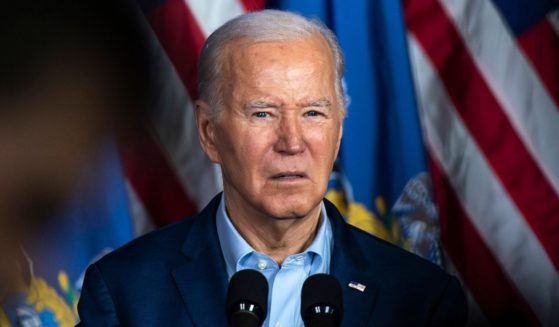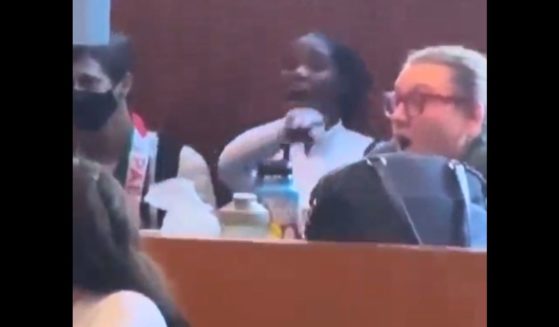Cali Backs Itself Into a Corner: Jail No Longer Threatening After State Springs High-Risk Inmates
Imagine, if you will, a state where a dread virus has caused officials to empty out jails.
Cash bail is waived if the crime isn’t serious. If someone can be let out of prison without presenting a danger to the community, they will be.
Heck, even if they present a danger to the community, there’s a pretty good chance they’ll be spending the coronavirus pandemic sheltering in place. At least we hope.
Imagine, too, if you will, a state where the citizenry is getting pretty fed up with being told to shelter in place.
They’re getting restive with their basic rights being abrogated. They feel the state government is being heavy-handed.
So, they take to the streets and to the steps of the state capitol, in violation of the shelter-in-place order the government has put in place to keep everyone safe.
Tough times call for tough actions: It’s time to put them in jail.
But wait! You can’t really do that. After all, the state is saving its residents from behaving in a manner that’s unsafe and could end with them catching the novel coronavirus by … putting them in a place where they could catch the novel coronavirus.
That’s quite the conundrum.
And yet, that’s where the Golden State currently finds itself.
While Democratic Gov. Gavin Newsom might not have imposed the most restrictive lockdown in the nation, the parameters seem a bit draconian when you consider the number of confirmed coronavirus cases in the state.
That’s why we saw sights like this right outside the California State Capitol in Sacramento earlier this month:
WATCH: ‘May Day’ protesters gathered at the California State Capitol earlier today. https://t.co/dmmQLSahAq pic.twitter.com/6ptvz1WAY6
— NBC 7 San Diego (@nbcsandiego) May 2, 2020
According to Sacramento’s KXTV, dozens were arrested and at least one person jailed during the May Day protests at the capitol.
“We are staunch supporters of people’s First Amendment rights but we want them to do things safely,” California Highway Patrol Assistant Chief Josh Ehlers said.
Which, absent violence, actually seems antithetical to what the First Amendment is all about, but OK.
Greg Schmidt, who helped organize the “Operation May Day” protest, said opening the state up was about jobs and freedom.
“Are we going to put all these people at risk of losing their livelihood, losing their homes, the stress and anxiety of destroying an economy for the possibility of a virus killing a few more people?” Schmidt said.
Down in Southern California, meanwhile, there were protests regarding the fact that beaches — a low-risk environment — were being closed:
WATCH: Large crowds gathered in Huntington Beach to protest the closure of Orange County beaches — which Gov. Gavin Newsom closed because of large crowds at area beaches. https://t.co/FuksIg1cmJ pic.twitter.com/QInDR5Dt80
— NBC 7 San Diego (@nbcsandiego) May 1, 2020
At a similar protest in Laguna Beach, the sight of flags apparently freaked police out enough that they banned flagpoles from future protests.
Well, at least the good news is that if California decides to start arresting people and throwing them in jail, there will be plenty of room.
The Golden State’s jails have been operating using the same methodology as a car dealership at the end of a model year: Everything must go.
Now, granted, in the midst of a global pandemic which tends to spread through prisons quickly, low-risk prisoners should be allowed out. That’s not just what California is doing, however.
On April 28, California prosecutors warned that seven “high risk” registered sex offenders had been released in a period of just three weeks, including some who “spent just days behind bars instead of the six months required by law for registered sex offenders who violate parole by removing or disabling GPS monitors,” which each of the offenders was accused of doing.
One of the offenders, a sexual battery convict, was released twice within three weeks, sentenced only to time served.
“These kinds of high-risk sex offenders are the most dangerous kind of criminal and the most likely to re-offend. They are doing everything they can to avoid detection by the parole officers assigned to monitor them so they can potentially commit additional sex offenses. These are not the kind of people who should be getting a break,” Orange County District Attorney Todd Spitzer said in a news release.
“As a state legislator, I was the author and founder of the State of California Sex Offender Management Board and the author of Megan’s Law on the Internet, which allows the public to see where these sex offenders are so that they can protect themselves and their families,” he added.
“It is not the Court’s responsibility to control the jail population by releasing these dangerous criminals back into our communities. The residents of Orange County deserve to have the peace of mind that registered sex offenders are being held accountable and not just let out the front door of a jail by a court commissioner who refuses to follow the law.”
Orange County Sheriff Don Barnes, meanwhile, reported April 28 that authorities had reduced jail populations by 45 percent since March 7, according to KTVU.
The new emphasis on emptying the cells has also meant that cash bail is, in many cases, a thing of the past.
In Glendora, California, Dijon Landrum was arrested three times in the same day — twice for alleged vehicle theft — without actually having to be bailed out.
And then there’s the case of Daniel Orozco.
On May 12, he was arrested for driving on the wrong side of the highway in Salinas, California, allegedly under the influence of drugs. The next day, he was released.
But not more than a quarter of an hour later, this happened:
“Not more than 10 minutes later Orozco forced a female out of her car in the parking lot of Natividad Medical Center. The female refused to give up the keys to her car so Orozco began to strangle the female’s 11 year old child,” the Salinas Police Department posted on its Facebook page. “The female gave her keys up and pulled her child out of the car before Orozco fled the scene.”
He was quickly apprehended.
So, that brings up a Catch-22. If you want to control protesters, you’ve got to put the fear of jail into them.
However, how do you put the fear of jail into them when your state has let alleged car thieves, sexual deviants and men like Daniel Orozco out? Will peaceful protesters replace hardened criminals in jail, all in the name of preventing the spread of the coronavirus?
Good work, California. Have fun controlling those protests — and, for that matter, your criminal population.
Truth and Accuracy
We are committed to truth and accuracy in all of our journalism. Read our editorial standards.












